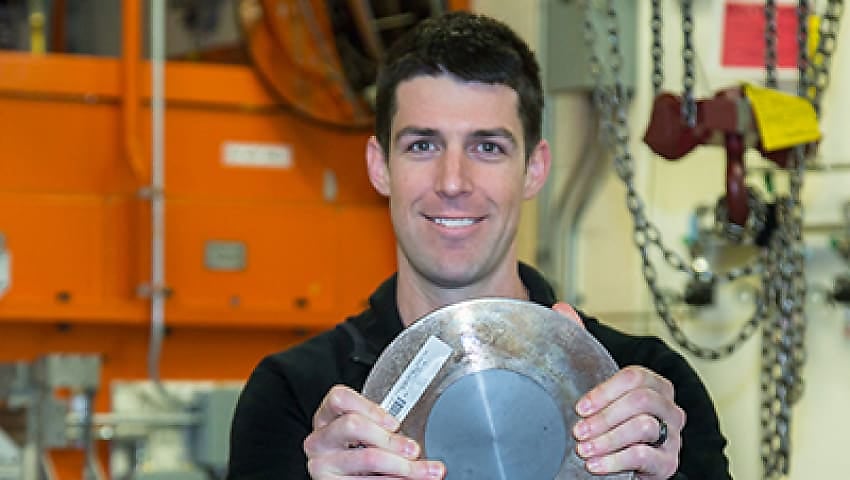The Defence Science and Technology (DST) Group is collaborating with researchers in the US to explore alternatives to the traditional heavy metal military vehicle armour.
DST Group researcher Shannon Ryan recently travelled to the Oak Ridge National Laboratory in the US where the research group is working in conjunction with the US Army Research Laboratory (ARL).
As part of the joint research, which falls under the Lethality and Protection campaign, scientists experiment with solutions for protecting soldiers against shaped charge warheads, kinetic energy projectiles and explosively formed projectiles.
Some of the work involved firing a neutron beam at the ceramic armour, with the goal of the research looking at synergies between technologies that would enable integrated armour to be developed as a lighter-weight solution against different types of threats to soldiers.
Ryan said these experiments will significantly improve the performance of certain armours.
"My main project during my posting was looking at the development of an integrated armour that could defeat a range of different threat types," Ryan explained.
"Working in co-operation with the Multi-Threat Armor Branch, we were able to significantly improve the performance of some candidate armours against kinetic energy penetrators.
Ryan worked on developing multi-role armour for future land vehicles that will be effective against various threats as opposed to the traditional layered armour, where each layer is optimised to defeat a particular threat.
Researchers say this multi-role approach is quite challenging as the armour mechanisms used to defeat the different threat types vary greatly.
Ryan said the facilities available in the US where he was based go a long way to creating and testing programs at an accelerated pace.
"Facilities like these mean you can design a test program, have everything prepared and tested within a matter of days or weeks (if necessary)," he said.
In the most recent tests at Oak Ridge, DST Group said the team there investigated the impact of applied stress on ceramic targets to correlate with ballistic performance for vehicular armour.
"We were seeking to understand how pre-applied stress impacts the material’s ballistic performance, to validate our models and predictive tools," said Ryan.
To apply the right amount of stress in the ceramic, the users confined the ceramic samples with a steel ring and measured the strain distributed through the ceramic target using neutron mapping technology.
Neutrons offer a better method to non-destructively measure strain distribution on the ceramic and they retain sufficient energy to penetrate the surface of dense materials like ceramics.
The next phase of the research is a series of ballistic tests on the compressed ceramic material to determine if the applied stress results in improved performance.
Australia and the US have an agreement on sharing certain technologies and an important aspect of Ryan’s posting was the development of relationships with the ARL team.


